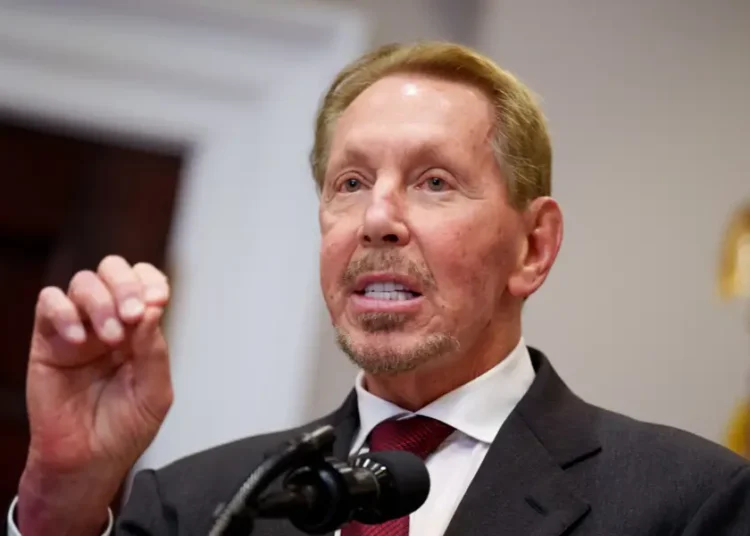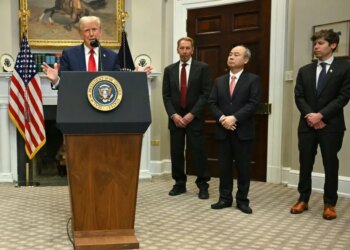The first time I married my wife, she was wearing a big white dress, and all our friends and family were there. The second time I married my wife, she wasn’t even in the room, though her mother was. The third time I married my wife, it was just the two of us and our teenage children in the woods.
At the Big White Dress wedding, Alison and I were 25 and working hard to be the adults we thought we were supposed to become. I had just returned from a year studying in Israel and decided that, despite a lifetime of distance from Judaism, I was now very religious. So I wore a traditional white wedding robe, leading my mother to shout, “You look like a butcher!”
She wasn’t wrong.
I was focused on the story of our ritual: which texts the rabbi would recite, how to make the ceremony egalitarian in a tradition that wasn’t. An employee helping with the outdoor ceremony saw something I didn’t — my wife’s bare hands wrapped around a bouquet on an unseasonably frigid autumn day — and slipped her a hand warmer. I was focused on the ceremony; he was focused on the human being.
The second time I married my wife, she was hooked up to IVs at Memorial Sloan Kettering Cancer Center in Manhattan, her skin gray from chemotherapy. I was at our home, 75 miles away, caring for our two small children. I had tremendous help from my mother-in-law, Hazel, who was also giving us her 10-year-old Toyota Corolla.
Hazel thought her daughter’s name should also be on the title. I thought Alison, who had been diagnosed with Acute Myeloid Leukemia six months earlier, did not need to be bothered with paperwork.
“It has to be in both of your names,” Hazel said. “I’m not giving the car to just you.”
“Hazel,” I said. “If I were going to leave, I’d have done it already. You think I’m sticking around for the Corolla?”
But the truth was, part of me did want to leave. I was frantic and exhausted. After putting the children to bed, I would sit on the porch, drink Scotch and cry until I passed out. I couldn’t imagine the rest of my life as a widowed father of two children under 6.
I thought I had committed to Alison at our wedding 12 years earlier, but in truth I had committed to an idea — a vision of who she was supposed to be, who I was supposed to be and what our life together was supposed to be. That vision didn’t include her being bald and emaciated or me being half-drunk and terrified.
It wasn’t until that vision crumbled that I really married her. Not a vision against which I could (and did) judge my wife, but my actual flesh-and-blood wife, whose flesh was withering and whose blood was attacking her. I wasn’t really married until I desperately wanted to walk out of my life and didn’t.
Neither of us realized it at the time, but the most important part of the white dress wedding was a line we had added to our ketubah, the Jewish marriage covenant. “We agree to create a separate time and space each year,” we wrote, “in the season of our betrothal, to stand amid the love and mistakes of the year that has passed and make a reckoning of it, and to look to the time to come.”
We had lived up to that, even before the leukemia. Every autumn, Alison and I had a mini retreat on the state of our marriage. We talked about the love and the mistakes of the year that had passed, writing it all down in a little black journal we picked up in an airport.
“We love each other so much — and still work to know that in the deepest parts of ourselves,” we wrote in 2014, a year after her successful bone marrow transplant.
When Alison got released from the hospital, we threw a giant party complete with a contra band and a bouncy castle. Our neighborhood bar donated two kegs of beer, and it seemed like our entire small town came to celebrate the doctor’s pronouncement: “Cured.” It was glorious.
Her hair was growing out. Her blood was once again ferrying oxygen throughout her body. Most importantly, her immune system could tolerate being around our children and their germs.
We were overjoyed. But we were also wrecked.
Alison had been afraid of dying, and I had been afraid of her dying — related fears, but not the same. Now we were back in the same house, sleeping in the same bed, but felt galaxies apart. There were times I feared that we had made it through hell only to get divorced on the other side.
“We’ve gotten so much better at accepting each other’s human imperfections, though there is always more work to be done,” we wrote in 2016.
Those mini retreats saved us. Two years after Alison’s return home, we rented a little cabin with pop-art Buddhas in western Massachusetts. Walking endless loops of Great Barrington, we opened the vaults we hadn’t realized we were carrying — resentments about compromises we had made for each other’s careers, about the balance of challenging and comforting our children, about how we navigated the darkest days of her illness. If Great Barrington had a 24-hour divorce lawyer, we probably would have stopped in.
Instead, we kept talking. Somewhere in those endless loops, something cracked. We began to see what we hadn’t before — that each of us was starring in our own movie. In my movie, I was the director, writer, lead and sole audience member, and Alison was a supporting character. I knew what she was supposed to say and got frustrated when she botched her lines.
In Alison’s movie, I was the one screwing up my lines.
Before she got sick, when we thought we were both in the same movie, we believed we had a happy marriage. We did, but we were also just lucky. We didn’t really get married until our luck ran out.
The annual retreat we had vowed in our ketubah wasn’t enough. Returning from Great Barrington, we started taking walks three times a week, just to talk. It sounds like a lot, and it was. Eventually, we cut back to once a week, always starting with the same two questions: When have you felt close to me this week, and when have you felt distant?
We each stopped insisting that our movie was the “right” one and started learning to hit pause and watch each other’s movie for a while. We learned there was a gap — sometimes a chasm — between our intent and the impact we had on each other. We learned that not naming our feelings or desires was not flexibility but cowardice. We learned how one “flawsome” person (someone who is both flawed and awesome) can love and be loved by another flawsome person.
We also learned how to actually articulate our convoluted psyches so that our partner would have a chance of understanding the plot of our movie. We learned how to be married to a person, not an idea.
Last fall, 23 years after the Big White Dress wedding, we returned to western Massachusetts for our anniversary and began writing a new ketubah for what our marriage is about now.
We worked on that document for nearly a year, and a few months ago, we married for the third time. We had those promises printed as a work of art and took them into the forest behind our house. No white wedding dress, no big party, no commitment to a specific vision of the life we were building. Just one flawsome person committing to another.
We promised to stop blaming each other for our own foibles and to each take responsibility for living our own lives fully and authentically. We promised to stop holding on to every slight as if it were a gemstone and welcome invitations to laugh at our hang-ups. We promised to remember that our marriage isn’t something we have but something we make every day, with every decision.
With our teenagers as reluctant if gracious witnesses, we made promises with more specificity than we could have imagined half a lifetime ago. We committed to the partners we actually have and love, not the movie-director’s idea of who they should be.
We finally understood that marriage isn’t one vow spoken one time but thousands of small recommitments to reality over fantasy.
It is not, I suspect, our last marriage, but it’s been the best one so far.
Brent Chaim Spodek, a counselor and rabbi in Beacon, N.Y., works extensively with couples preparing for marriage.
Modern Love can be reached at [email protected].
To find previous Modern Love essays, Tiny Love Stories and podcast episodes, visit our archive.
Want more Modern Love? Watch the TV series, sign up for the newsletter and listen to the podcast on iTunes or Spotify. We also have two books, “Modern Love: True Stories of Love, Loss, and Redemption” and “Tiny Love Stories: True Tales of Love in 100 Words or Less.”
The post The Three Times I Married My Wife appeared first on New York Times.




